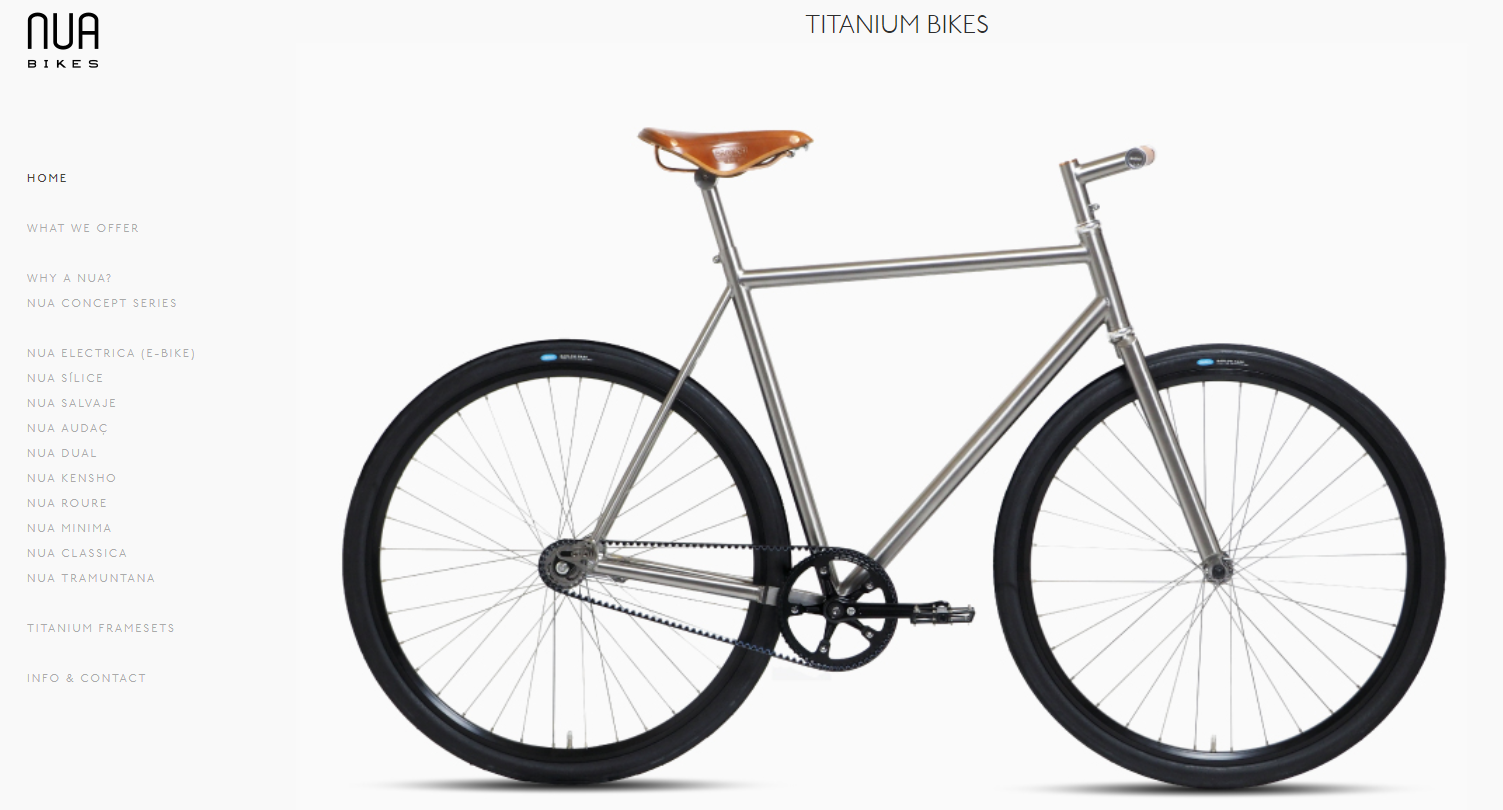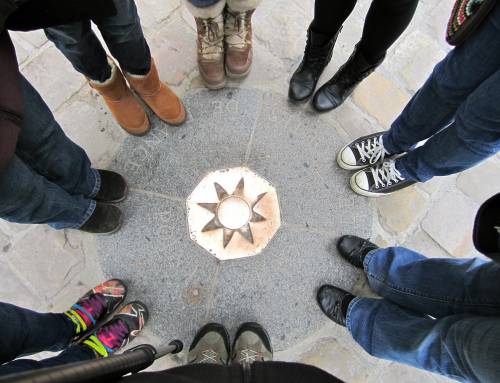This is a paper presented by Ryan Schmidt, a recent graduate of the Global Digital Marketing and Localization Certification (GDMLC) program. This paper presents the work being produced by students of The Localization Institute’s Global Digital Marketing and Localization Certificate program. The contents of this Paper are presented to create discussion in the global marketing industry on this topic; the contents of this paper are not to be considered an adopted standard of any kind. This does not represent the official position of Brand2Global Conference, The Localization Institute, or the author’s organization.
In recent years, minimalistic aesthetics have become increasingly popular in Western nations. Ironically, the idea of less is more has completely entranced typically capitalistic societies and has touched everything from interior design to filmmaking. In this commentary, I will argue that utilizing minimalism in global marketing may be a trend to follow. There are three main aspects of minimalism in marketing and branding/product strategy that demonstrate this: fewer words, uncluttered imagery, and fewer options. Using a strategy like this can make Localization easier as well as create problems. I will be exploring examples of all three aspects and ultimately why I think minimalism is helpful to global marketers.
Defining Minimalism in Global Media
The first aspect of minimalism, utilizing few words(or sometimes none at all) to send your message is essential to be understood across cultures. For example, FedEx hired Brazilian photographer Manolo Moran to take a series of photos depicting people passing packages through windows(pictured below). The wall outside each set of windows is painted with murals of continents, creating the visual of packages being passed between nations. These ads contain no words at all, however, it can be interpreted fairly easily by anyone. It is clear that FedEx is a delivery company that has a worldwide presence.
Additionally, the colors are very important, the backdrop is different shades of brown which almost looks like cardboard and makes the package with the FedEx logo stand out. The tricky part of localization in marketing is branding and the brilliant thing about using an image is that it can be translated without context.
The second aspect of minimalism, using simple imagery that is universally understood relates to the idea of using fewer words. There are certain images that can be understood across many cultures, as shown in the ad above, the map of the world is a great example of this. It conveys globalism and can be interpreted around the world. A bicycle company in Barcelona called NuaBikes grasps this well. Below is a screenshot of their website. The site consists of a list of products, info about the company and images.
There are not a lot of words as well as not a colors, most of the website is shades of white and black with the exception of the colors on the bike draws the attention to the product.
Less is More
The third aspect of minimalism that is worth exploring is the idea of having fewer products of higher quality. This is something that along with great campaigns, the product itself carries a good brand weight. Minimalist lifestyles are important to many people who prefer high-quality products with fewer options. The effect of limiting choices is two-pronged: it can both create a premium image for a product and also help to increase sales.
The idea that less choices may lead to more sales may seem counter-intuitive, but creating too many options may actually exasperate customers. A study run in Dartmouth college asked students to rank pens, after which the students would be given the opportunity to buy the pens. This experiment was run with different numbers of individual pens, and the groups ranged in size from two to twenty. The study did find that students were more likely to purchase a pen if they had more options However, the students’ likeliness to buy a pen peaked around ten options, and students were actually less likely to buy a pen from the set of twenty than they were from the set of two. This would suggest that it is important to have options but that if there are too many, people get overwhelmed with choices. If this information is used with a marketing/branding strategy that matches that minimalist product strategy, it can be very effective.
Dangers of Oversimplification
The level of context that a certain culture has is important to its marketing. If advertising to a high context culture, the marketer must be careful to follow cultural norms whereas, in low context, the marketer must be as descriptive as possible. How does this tie into minimalism? The less text as well as the less culture-specific imagery, the more universally adopted a campaign can be. This means that not only can you create elegant campaigns that will stand out, but that they are also easier to localize.
That being said, oversimplification of culture-specific imagery can make it seem as though the company does not understand a certain culture. If using minimalism, the ad must be carefully reviewed before submission. An example of this, pictured below is a campaign launched by Coca-Cola. The text roughly translates to “This new year get together with Coca-Cola”.To someone who is not familiar with Russian geography, it might seem like nothing is wrong with it, but it is missing Kaliningrad, which is a city that was annexed by Russia after World War II(circled in red on the image to the right). This caused outrage by a lot of social media users in Russia, so much so that they created the hashtag #BanCocaCola. This was obviously detrimental to their brand.
The interesting thing about the Coca-Cola example is that it has many similar aspects to the FedEx examples. It uses imagery that most people would understand, a map of Russia as well as Christmas which is a holiday that is commonly celebrated there. This ad was likely made once and then translated and added to multiple different country maps. The major difference is that the Coca-Cola ad is specific to the country that it is marketing to which means more research and care must be taken. Following the universally interpreted image, the FedEx ad focuses instead on a region, which increases the area of where it can be used and decreases the amount of culture-specific research that must be done as well as the risk taken by marketing to multiple countries on the same campaign.
Should Strategists Consider Minimalism?
In general, it seems that minimizing the message that you are trying to send is a good idea but should be done with caution. The strategy is keeping things as context neutral as possible makes it safer, which can sometimes be hard to identify. Something as simple the clothing someone wears in an ad can be polarizing in a certain country and fine in another. This is why if a company wants to do a blanketed minimalist global marketing approach, the necessary research should be done to ensure that it can be applied to each area. If done properly, a minimalist global campaign and product strategy can look good for your brand while potentially minimizing costs, increasing the number of purchases, and simplifying the localization strategy. This is why I believe the trend is a good thing for global marketers who harness it.
Author Bio:
 Ryan Schmidt is a Digital Marketer who works for the Localization Institute. He helps promote all the programs including the Global Digital Marketing & Localization Certification as well as the Global Branding & Marketing Certification. He has been doing so since 2017 after graduating with a BA in Digital Marketing.
Ryan Schmidt is a Digital Marketer who works for the Localization Institute. He helps promote all the programs including the Global Digital Marketing & Localization Certification as well as the Global Branding & Marketing Certification. He has been doing so since 2017 after graduating with a BA in Digital Marketing.
Connect with Ryan:
ryan[at]localizationinstitute.com
Ryan’s comments on the Global Digital Marketing & Localization Certification:
“As someone who has recently studied digital marketing, I found this program to be a great expansion of my current knowledge. The content is something that anyone working in a global market should know.”
Learn More
 If you are interested in learning more about the Global Digital Marketing and Localization Certification please click here. The program offers dual credentials, with a Certificate from the University of North Carolina Wilmington and a Certification from The Localization Institute.
If you are interested in learning more about the Global Digital Marketing and Localization Certification please click here. The program offers dual credentials, with a Certificate from the University of North Carolina Wilmington and a Certification from The Localization Institute.
References
Hubble, E. (2016, April 11). Minimalism in Marketing: 17 Brands Getting It Right. Retrieved from https://www.ve.com/blog/minimalism-in-marketing-17-brands-getting-it-right
Bowler, J. (2019, April 25). 25 of the worst marketing fails in recent years (British and international). Retrieved from https://blog.printsome.com/marketing-fails-recent-years/
Kaliningrad. (2019, April 27). Retrieved from https://en.wikipedia.org/wiki/Kaliningrad
Rivers, A. (2018, November 15). Marketing to Minimalists – Path. Retrieved from http://wearepath.com/marketing-to-minimalists/
Shah, A. M., & Wolford, G. (2006). Buying Behavior as a Function of Parametric Variation of Number of Choices(pp. 369-370, Rep.). Hanover, NH: Dartmouth College.
https://pdfs.semanticscholar.org/18ec/2947a5358610a2215412f310b507865ad455.pdf
Nua Bikes – Titanium bikes, frames and components. (n.d.). Retrieved from https://www.nuabikes.com/#/home
Disclaimer












